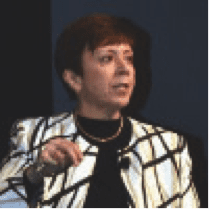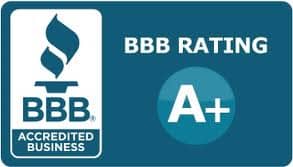By Tina Soika
Building your legacy team is a continual process. It becomes the end product of effectively leading and managing your staff, allowing you to exit your practice when you are ready, with financial security and the reasonable expectation that it will continue successfully for years to 
come.
If you are the practice’s owner, you are the practice’s leader. Period.
Ready or not, no matter the practice size, no matter how many employees, no matter if you want the role or not, your practice and your staff expect you and need you to be the leader.
But don’t fret. That is good news. Not that it is easy, but being an effective leader brings many benefits and rewards. As the leader, you are the captain of the ship, the top dog, the grand pooh-bah. You will have great influence on the success of your practice, in terms of both service to your patients and financial profit. And these are good things.
Effective leaders, however, do certain things to ensure their success. They also develop their staff. They build their “Legacy Team,” as we call it at American Hearing Aid Associates (AHAA).
Building a Legacy Team
A legacy team is a cohesive group with a common goal and a set of shared values who work together with accountability and passion. Everyone participates, and everyone supports one another. No one ever says, “That’s not my job.” Everyone knows and believes in the goals of the practice.
Your Last Day as a Practice Owner
Nothing is forever. Someday, you will exit your practice. What do you want that day to look like? What do you want your practice to look like when you pass it on to the next practice owner?
What do you want your “legacy” to be? How will your staff act in your absence? Will your patients remain with the practice? Will your community continue to admire and support the practice?
Imagine the value that you can put on a practice that is a self-sustaining machine that does not rely on you to provide the fuel. Creating this legacy is one of your most important jobs and rewards as a leader.
Two Dangers for Leaders
Two of the dangers that face every small business owner are lack of information and fear.
Lack of information comes from many sides, including poor continuing education and training for you and your staff, poor internal communications, inadequate office technology, and inadequate marketing research.
Fear takes many forms, including fear of success, fear of failure, fear of change, fear of confrontation, and fear of “what people will say.”
Lack of information and fear can create non-leaders. They can channel you to act as a co-worker and not as a leader, not to develop and implement plans for growth, not to implement change well, to manage staff poorly, and to ignore employee weaknesses. Ultimately, they can contribute to undue stress and burnout.
What Effective Leaders Do
Effective leaders do a number of things to build a legacy team that ensures their own and their practice’s success both now and in the future.
Hire the right people. Leaders hire the right people and fire the wrong ones. The right staff is your greatest asset. Weak or bad hires can crush a practice, for they cannot be turned into a team. If an employee is unwilling or unable to change, change the employee. You are as strong only as your weakest link.
Establish a vision and goals for the practice. Leaders have vision. They create plans and goals for today, tomorrow, and 5 years from now—and for their exit.
Communicate vision and goals to the staff. Once you have created the vision and arrived at the goals for your practice, communicate them to your staff. The most effective way to communicate with your staff is in regular meetings.
An annual meeting brings every staff member together, ideally at an off-site location. If this is the first such meeting, use it to communicate the vision, strategic plan, philosophy, and direction of the practice. In the annual meeting, you establish goals and expectations for every employee for the coming year. The meeting establishes a culture of accountability for both you, the owner, and your staff.
Thereafter, conduct quarterly meetings that deal with changes, updates, and refinements to the vision and goals. These meetings also deal with results.
Meetings are extremely powerful. If done well, they have tremendous beneficial impacts on the success of your practice.
Set expectations for the staff that are tied to the vision and goals. Every employee should know what is expected of them. They should have their roles and responsibilities in writing upon joining your practice. And then annually, each should have personal objectives for the year. The latter can be developed jointly with each employee. They can include points, such as marketing calls made, initial and follow-up appointments scheduled, and number of hearing aids dispensed.
Motivate the staff. Effective leaders display a passion for what they are doing. They lead by example. They inspire greatness. They set the tone for ethics, work habits, and self-improvement. They stamp out skepticism or that jaded, pessimistic, negative attitude that is the enemy of vision, change, belief, and growth.
Manage the staff members who work for them. Each member of your team has strengths, challenges, and weaknesses. This includes front office personnel, telemarketers, audiologists, professional development representatives, and director of operations. As discussed earlier, they all should have job descriptions with clear expectations of what is expected of them. Each should have a development plan that motivates them to take advantage of training and professional opportunities that will improve their value in helping themselves and the practice succeed. And their progress in all areas must be tracked and measured. Conduct regular performance reviews to praise successes and address weaknesses.
Constantly challenge yourself and your staff to grow and change. Your practice will not grow if you do not. Push yourself beyond your comfort zones, especially in learning about how to manage and lead people, as well as new office technology, new products, trends in the economy, and industry sales of hearing care products. Learn from your peers by taking advantage of national and regional meetings of other owners in practices similar to yours. Look in the mirror regularly, and address and resolve your own weaknesses.
A Continual Process
Debates continue over whether great leaders are born or made. Indeed, many are naturally born, but even their skills need development. Far more leaders are made. Most of us have innate leadership abilities that can be grown and honed with training and experience.
Building your legacy team is a continual process. It becomes the end product of effectively leading and managing your staff, and allowing you to exit your practice when you are ready—with financial security and the reasonable expectation that it will continue successfully for years to come.
Tina Soika is president of American Hearing Aid Associates, Chadds Ford, Pa. She joined AHAA in 2000. She has some 30 years’ experience in general management, marketing, and sales in the health care industry. She earned her MS in speech/language pathology from West Virginia University. CORRESPONDENCE can be addressed to: [email protected]





